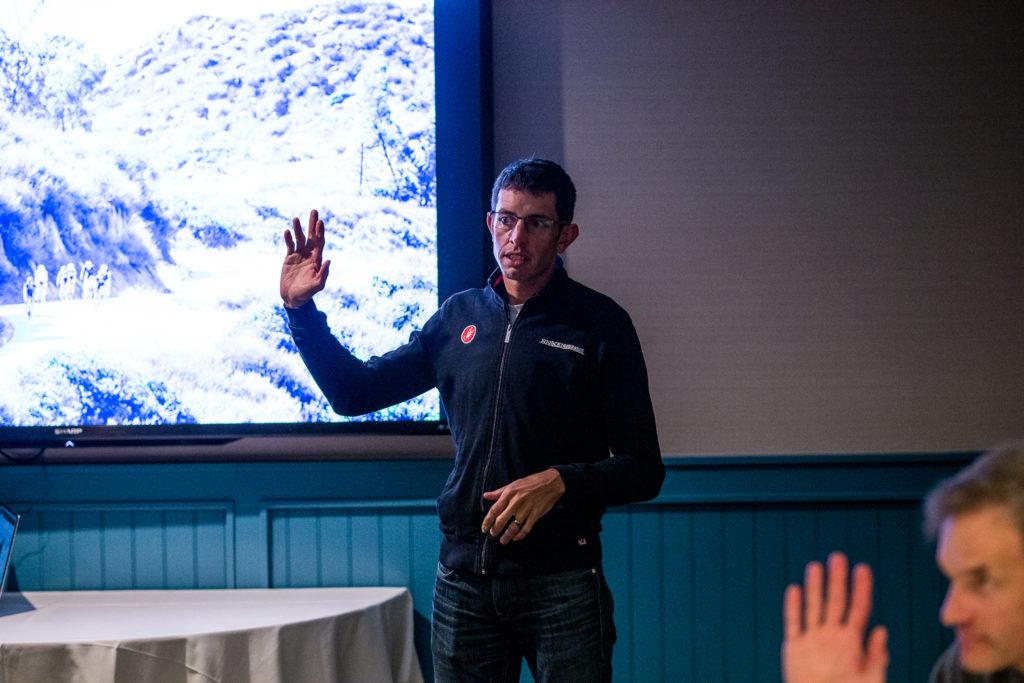Film Study: Cycling’s New Training Frontier

While many sports have benefited from film and video technology for years, and even decades, cycling is not quite there yet. There are a variety of reasons for this, but primarily it’s due to the lack of accessible video and the associated cost of filming or otherwise capturing the correct things in a sport that thrives on mobility across great distances. With the plethora of new ride-recording options, it’s time that cycling benefited from video replay and film study like other sports have.
In major American sports, as well as in international sports, film has shaped and directed the progression of the sports over time. Football, basketball, baseball, and soccer have all seen strategic and training benefits from video replay. In many American high schools, for example, football players see video replay of games weekly, as far back, and in some cases even farther, as the 1960s. This allows technique analysis, strategic guidance, and immediate, visual feedback to the entire team, both individually and together. For those players who want to improve on the mental and tactical aspects of their sport, video replay has been massively valuable. In other ball sports, player position on the field and technique has also seen a huge improvement because the players’ ability to visualize their location relative to their team and their objectives is, again, immediate and visual. These advantages are great enough that virtually every successful team across professional sports includes video sessions to maximize performance. They’re great enough that since the widespread use of video in football occurred, the sport has seen increasingly complex strategy, in the form of play-calling directions and formations, since the technology was introduced to the sport 5+ decades ago. Football is far from the only sport in which this has occurred, either.

Furthermore, in the endurance sports world, video has proven at least as advantageous as in team ball sports. Coaches in swimming can see their athletes’ strokes in real time, in slow motion, and even in distinct movement segments. This allows coaches to hone in on and improve their athletes’ ability to propel themselves through the water by minimizing drag and maximizing forward propulsion movements. They can then evaluate even minuscule changes in technique to identify what works, what doesn’t, and why. Running coaches, too, can see how an athlete’s stride length affects the whole chain of movement. In motion, they can see muscle activation patterns, stride length, core motion, and they visualize other key performance-affecting motion. In analyzing this, they can strengthen weak activation patterns, vary stride length to produce more speed, or reduce effort, and minimize excessive motion. Nike’s famous sub 2-hour marathon attempt is a prime example of how coaches and athletes alike can use technology in improving performance beyond that of the past. In their record attempt, making a massive jump in what has been believed to be possible for running a marathon, Nike used video analysis to optimize their runners’ strides as much as possible. They even chose their athletes for the attempt using a full analytical consideration that included video analysis of the runners’ form.
Film review is a pathway, under the guidance of an experienced, knowledgeable, and astute coach, by which most riders have the potential to improve their results from mere pack fodder to podium places and category upgrades. First, though certainly less significantly, is the potential to use technique analysis to improve sprinting posture, biomechanics, aerodynamics, and overall power output, with individual video of
you as a rider. This has been seen in the last decade with the advancement of bike fit techniques in systems such as Retul. With the availability of cameras and access to in-race footage from the perspective of any individual rider, the possibilities for tactical and strategic improvement are simply monumental.
Using film from some well-known races in addition to raw footage from Cory and Justin Williams, Source Endurance will apply this technology which is “new” to cycling in order to enhance the learning experience
during the Source Endurance Criterium Camp p/b Legion of Los Angeles running February 8-10, 2019. Learning a craft as complex as bicycle racing is easier to do when each individual can watch from a good vantage point but without being put under duress by the strain of the race.

As an Exercise Science student at the University of Texas, Mitchell Sides assisted coaching the university cycling and triathlon teams. Since graduating, he raced professionally for Elevate Pro Cycling and started his coaching career at Source Endurance. Mitchell has been using TrainingPeaks and WKO4 analytical software to help optimize workouts for each athlete. His athletes range from masters to college freshmen in cycling and triathlon.
